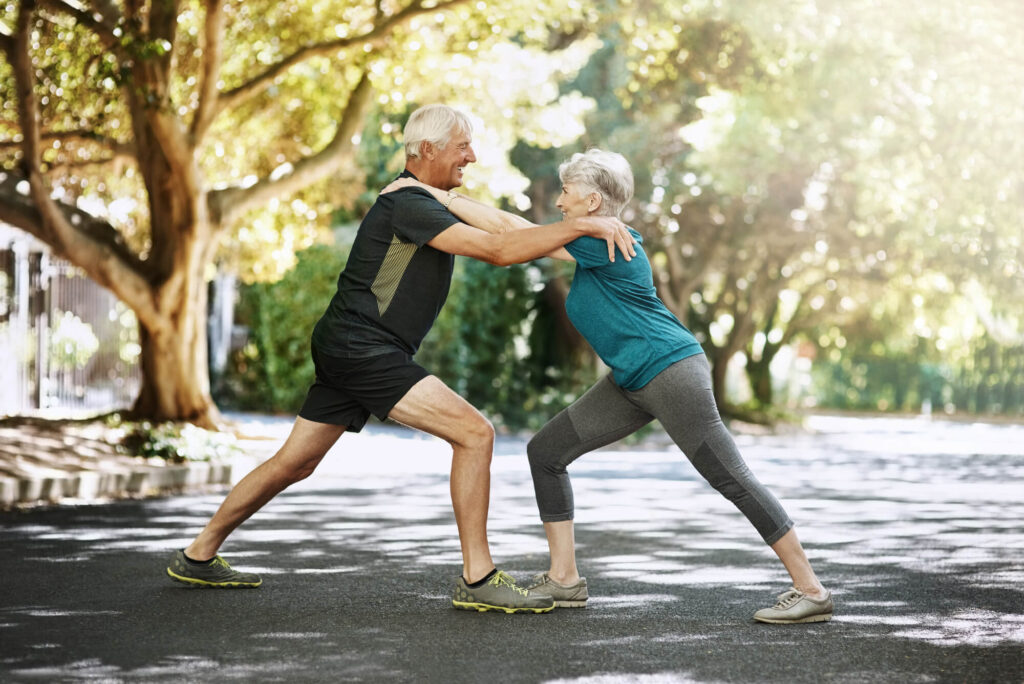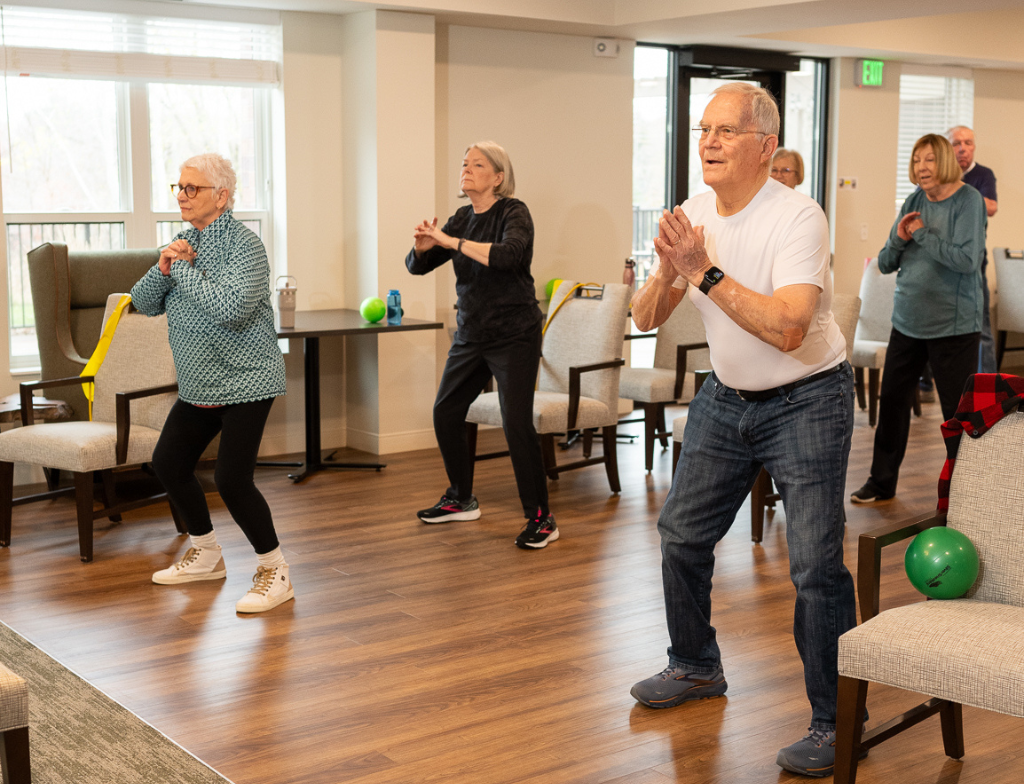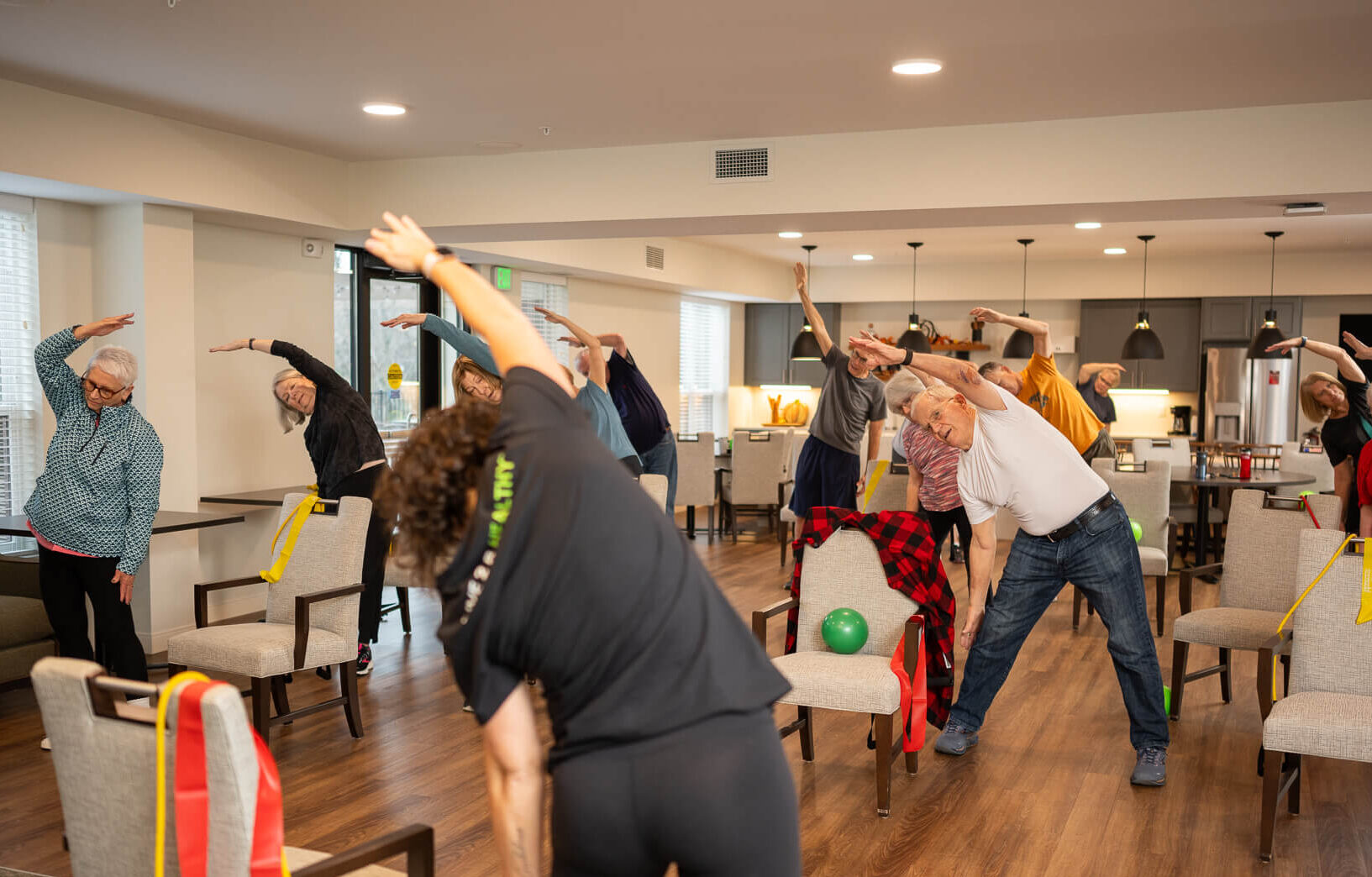In a world where mental health challenges are increasingly prevalent, finding effective and accessible strategies for enhancing well-being is more important than ever. While traditional treatments such as medication and therapy play crucial roles, a powerful and often overlooked remedy lies in the simple act of moving our bodies. Exercise, whether it’s a brisk walk in the park or a few minutes on a treadmill, has been shown to significantly improve mood and mental health.
On top of that, outdoor activities not only elevate our heart rates but also immerse us in nature, which can further amplify the mental health benefits.
Let’s dive into the many ways that exercise—especially in natural settings—can enhance our mental well-being, boost our mood, and help us navigate the complexities of life with greater resilience. Whether you’re seeking to alleviate symptoms of mental health conditions like anxiety and depression or simply looking to improve your overall outlook, incorporating physical activity into your routine could be the key to unlocking a happier, healthier you.
The Powerful Link Between Exercise and Mental Well-Being
In today’s fast-paced world, maintaining good mental health is just as important as physical health. One of the most effective tools for enhancing emotional well-being is regular exercise. Physical activity is a powerful tool that not only strengthens the body but also improves mental health, reduces stress, and enhances cognitive function. Research from the World Health Organization (WHO) and the American Psychological Association (APA) highlights the profound influence of exercise on mental well-being.
The Benefits of Exercise on Both Body and Mind
Even engaging in moderate-intensity exercise and high-intensity aerobic exercise provides a range of mental and physical benefits, including:
- Improved cardiovascular health – Cardiovascular exercises and activities such as aerobic exercise, running, and cycling enhance heart health and circulation.
- Boosted immune system and energy levels – Increasing activity levels can reduce fatigue and help combat the negative effects of sedentary behavior.
- Enhanced muscle strength, flexibility, and mobility – Strength training and resistance exercises improve motor memory, executive function, and cognitive task performance.
- Better cognitive function – Physical activity influences hippocampal function and long-term memory formation, improving cognitive task performance and memory retention.
- Mood stabilization – Exercise reduces symptoms of major depression and clinical anxiety by releasing neurotrophic factors (proteins that help the nervous system) that regulate emotions.
Even a single session of moderate exercise can have positive effects on mental health. The U.S. Department of Health and Human Services recommends at least 150 minutes of exercise per week, combining moderate and vigorous activities to maximize health benefits.
Psychological Benefits of Exercise
While most people might already be familiar with the positive effects of exercise or increased physical activity has on our bodies, there’s more many can learn about how an extra few minutes of exercise a day can help both our cognitive performance (how well we think) and our emotional stability in ways that are constantly underappreciated.
Increased and stable activity per week can immediately have the following results:
- Reduce Symptoms of Depression: Physical activity is an effective treatment for depression. Studies show that one of the most powerful effects of exercise in humans is acting as an antidepressant for treating mild to moderate depression. Moderate-intensity exercise increases serotonin and dopamine production, enhancing mood and reducing the symptoms of depressive disorder.
- Alleviating Anxiety: Exercise lowers stress hormones such as cortisol and improves the body’s physiological response to stress. High-intensity exercise and even acute resistance exercise promote relaxation and reduce fear response, which is especially beneficial for individuals with post-traumatic stress disorder who might struggle with even a single task sometimes.
- Boosting Self-Esteem: Engaging in regular fitness routines fosters a positive body image and provides a sense of accomplishment. Achieving SMART goals related to physical fitness can boost self confidence and reinforce healthy habits.

How Physical Activity Affects Brain Chemistry
Understanding the exact influence of exercise on brain chemistry can illuminate why even a single workout can lead to a happier mindset. Let’s explore the key mechanisms through which exercise boosts our mood and enhances cognitive function.
Release of “Feel-Good” Endorphins
Engaging in exercise leads to the release of endorphins, which are hormones that naturally alleviate pain and help stabilize mood. This effect is especially noticeable following an aerobic activity like running or swimming, where the sense of euphoria commonly referred to as the “runner’s high” can be experienced.
Impact on Serotonin Levels
Physical activity has a significant impact on the production of serotonin, a neurotransmitter linked to well-being. By increasing serotonin levels, exercise enhances mood, improves sleep quality, and even aids in appetite regulation. For this reason, health and physical activity guidelines recommend incorporating regular movement as a critical approach to managing conditions like depression and anxiety.
Exercise and Neurotransmitter Function
Consistent physical activity leads to exercise-induced increases in levels of neurotransmitter activity, which is essential for supporting long-term memory, improving executive function, and enhancing overall cognitive performance. Regular exercise contributes to better mental clarity and sharper thinking over time.
So, Why Exactly Does Exercise Enhance Our Mental Well-Being?
With the effects of exercise on our brains being proven by several acute exercise studies, we can now be even more sure about how our minds are healthier when engaging in physical activity. Even low-intensity exercise, done constantly, leads to improvements in sleep quality, allowing for more restorative rest thanks to improved management of both depression and anxiety, together with our bodies being genuinely more tired.
It also boosts energy levels and enhances metabolic function, which can contribute to an overall feeling of vitality. Additionally, regular exercise encourages the establishment of routine and structure in our daily lives, which is important for mental stability and well-being.
Exercise as a Valuable Supplement or Alternative to Therapy
For individuals currently participating in cognitive behavioral therapy (CBT), incorporating exercise into their routine can serve as a meaningful complement to their traditional treatment methods. Research in the field of sports medicine consistently demonstrates the psychological benefits of physical exercise and the significant role it plays in reducing the severity of various mental health conditions.
The Long-Term Exercise Behavioral Effects
Besides the clear psychological benefits of voluntary exercise in humans in the short term, we can also mention the benefits of long-term exercise if the new routine becomes a lifestyle:
- Sustaining Mood Improvements: Continued engagement in exercise sessions reinforces neural pathways that support long-term memory formation.
- Developing Healthy Habits: Building an exercise routine strengthens discipline and resilience, preventing future relapses into depressive disorder.
- Building Resilience and Improving Fitness Level: Over time, maintaining high-intensity exercise sessions leads to increases in exercise tolerance, improving overall physical condition, and giving yourself another boost in self-esteem.
5 Easy Ways to Fit Exercise into Your Daily Routine
Incorporating exercise into your daily routine doesn’t have to be daunting. With a few simple adjustments, you can boost your mood and enhance your overall well-being.
Below are five practical tips to help you seamlessly integrate exercise into your life:
- Start Small & Stay Consistent: It’s important to remember that you don’t need to dedicate hours to working out with acute resistance exercises or intense cardio sessions. Short bouts of exercise and achievable goals, such as a quick 10-minute walk, can have a significant impact on your mood and energy levels. Consistency is key; even small amounts of physical activity can build momentum over time.
- Choose Activities You Enjoy: Exercise doesn’t have to feel like a chore. Discover activities that bring you joy, whether it’s dancing, cycling, hiking, or weightlifting. When you engage in something you love, you’re more likely to stick with it and reap its mood-boosting benefits.
- Make It Social: Exercise can be a great way to strengthen your relationships. Consider joining a local exercise group or working out with a friend. The social interaction can make your workouts more enjoyable and keep you motivated to show up regularly.
- Incorporate Movement into Daily Life: Look for opportunities to move throughout your day. Consider taking the stairs instead of the elevator, walking the long way to lunch, or even doing stretches while watching TV. These small changes can accumulate and contribute to being a more healthy adult.
- Set Achievable Goals & Track Progress: Setting realistic and achievable fitness goals can provide you with a sense of accomplishment as you reach them. Use mobile apps or journals to track your progress; visualizing your improvements can further motivate you to maintain your exercise routine.
Remember, the journey to a healthier mind and body is about finding what works best for you and enjoying the process.
Safety Considerations & Consulting a Professional
- Importance of Consulting a Health Professional: Before starting a new exercise routine, consult your GP or accredited exercise physiologist, especially for those managing psychological disorders.
- Listening to Your Body: Avoid pushing through pain or the negative effects of overtraining. Activity per week should be adjusted based on individual fitness levels.

Types of Physical Activities to Enhance Mood
Different types of exercises not only elevate your mood but also contribute to overall mental health improvements. Here, we explore various activities that can help you feel uplifted and energized.
Cardiovascular Workouts (Running, Swimming, Cycling)
Cardiovascular exercises such as running, swimming, and cycling are fantastic for boosting mood. These activities elevate your heart rate, which improves blood circulation and enhances brain function. They promote the release of brain-derived neurotrophic factor (BDNF), a protein that supports neuron growth and cognitive functions. Regular cardiovascular workouts can lead to significant reductions in stress and anxiety while fostering a sense of accomplishment.
Strength Training
Strength training often gets overlooked in discussions about mood enhancement, yet it plays a vital role. Exercises like weightlifting, resistance band workouts, and bodyweight routines help elevate levels of insulin-like growth factor (IGF), which are crucial for both muscle development and brain health. Strength training can also create a sense of empowerment and achievement as you track your progress and set personal records.
Yoga and Mindfulness Exercises
Yoga and mindfulness practices provide a unique blend of physical activity and mental focus. The combination of gentle movements, controlled breathing, and meditation techniques effectively reduces stress and promotes relaxation. These practices lower cortisol levels—often referred to as the “stress hormone”—and improve mental clarity. Incorporating yoga into your routine can enhance your ability to cope with everyday stressors and elevate your overall mood.
Exercises for Seniors
Physical activity is essential for everyone, including seniors. Low-intensity exercise programs designed specifically for older adults can help maintain cognitive function and mobility. Activities such as walking, tai chi, or gentle stretching not only enhance physical health but also promote social interaction and emotional well-being. Choosing adaptive exercises ensures that seniors can reap the mood-boosting benefits of physical activity while staying safe and engaged.
Incorporating a blend of these activities into your routine can lead to significant improvements in your overall mood and mental health. Whether you prefer high-energy workouts or more mindful practices, finding the right balance is key to experiencing the full benefits of exercise on your mood.
How Outdoor Activities and Nature Also Improve Mental Health
In addition to indoor workouts, engaging with outdoor activities and nature can significantly enhance your mental well-being. Being outside not only adds variety to your exercise routine but also integrates the natural benefits of fresh air, sunlight, and community. Let’s explore some of the key ways outdoor activities contribute to mood improvement.
Sunshine & Vitamin D Benefits
Exposure to sunlight is essential for our overall health and well-being. One of the most important benefits of sunshine is its ability to boost vitamin D levels, which are crucial for immune function and mood regulation. Vitamin D helps produce serotonin, a neurotransmitter known to elevate mood and alleviate feelings of depression. Regularly stepping outside for activities such as walking, jogging, or cycling can combat symptoms of seasonal affective disorder (SAD), which often occurs in the winter months when sunlight is limited. Even just a short time outside—especially in the morning sun—can have significant positive effects on your mood and energy levels.
Green Spaces & Mental Clarity
Spending time in natural environments not only refreshes your mind but also enhances various cognitive abilities. Research indicates that being in green spaces can improve motor memory, cognitive function, and even overall emotional well-being. Activities like hiking, gardening, or simply strolling through a park allow the brain to rest from the constant stimuli of daily life, leading to improved focus and mental clarity. The serenity of nature provides a much-needed escape from our busy lives, fostering creativity and problem-solving skills, all of which can positively influence your mood.
Social Connection & Outdoor Exercise
Physical activity in outdoor settings often provides opportunities for social interactions, which are vital for emotional health. Engaging in group sports like walking clubs not only promotes physical fitness but also fosters a sense of community and belonging. These social connections can help reduce feelings of loneliness and isolation, which are often linked to mood disorders. The camaraderie and support found in group settings like group classes can motivate individuals to stay physically active, thus enhancing both physical and mental health.
Incorporating outdoor activities into your routine allows you to harness the full spectrum of benefits that nature provides, making it a powerful ally in your quest to boost your mood.
Taking the First Step Toward a Happier, Healthier You
Exercise is one of the most beneficial effects you can introduce into your life. It improves mental health, cognitive performance, and long-term memory formation while supporting physical health. No matter your fitness level, starting a workout routine can help boost your mood and overall well-being.
If you’re a senior looking for a safe, engaging way to stay active, consider joining a Live 2 B Healthy fitness program at a local senior living community. These programs provide structured workouts, social support, and professional guidance to help older adults improve their mental and physical health.










